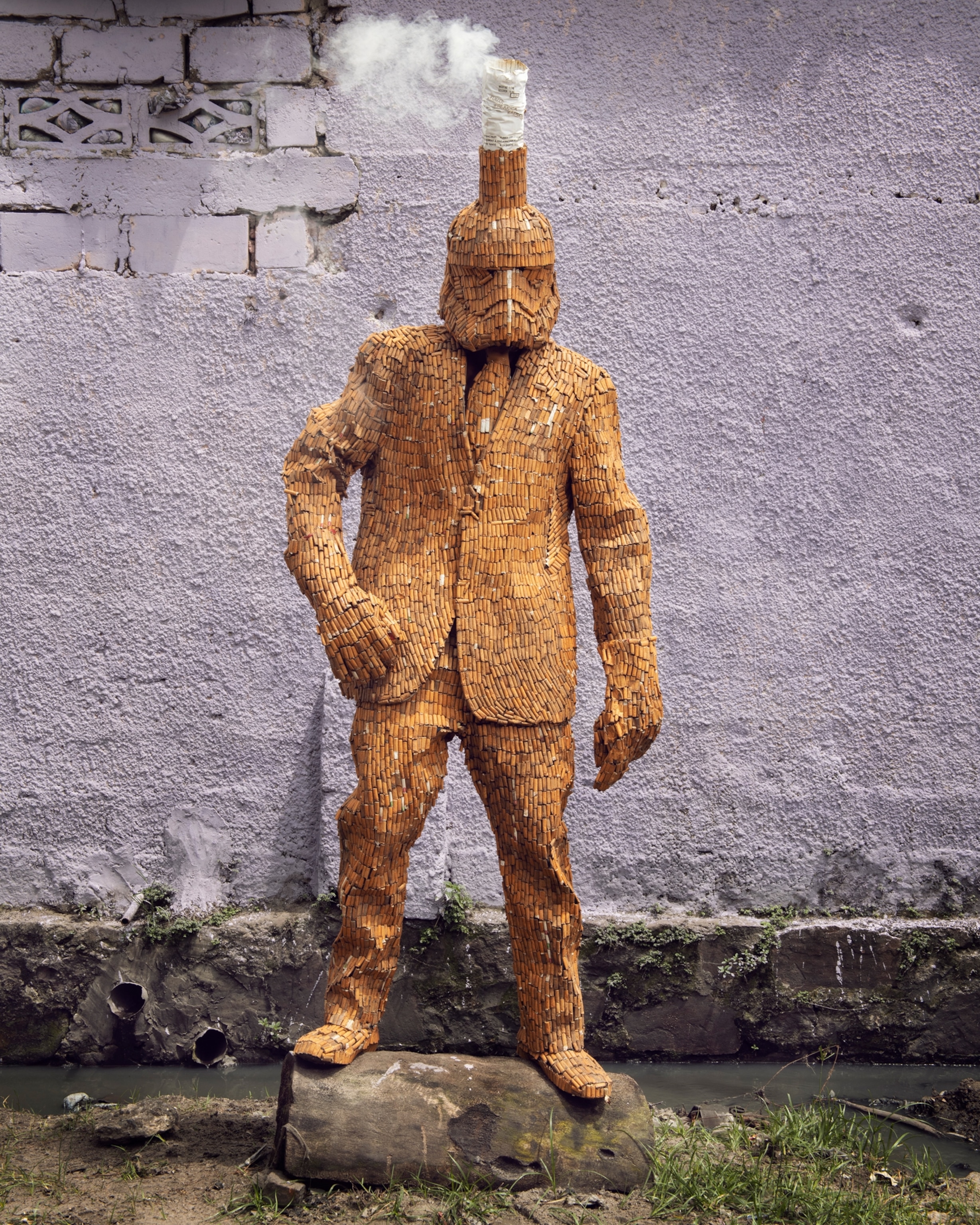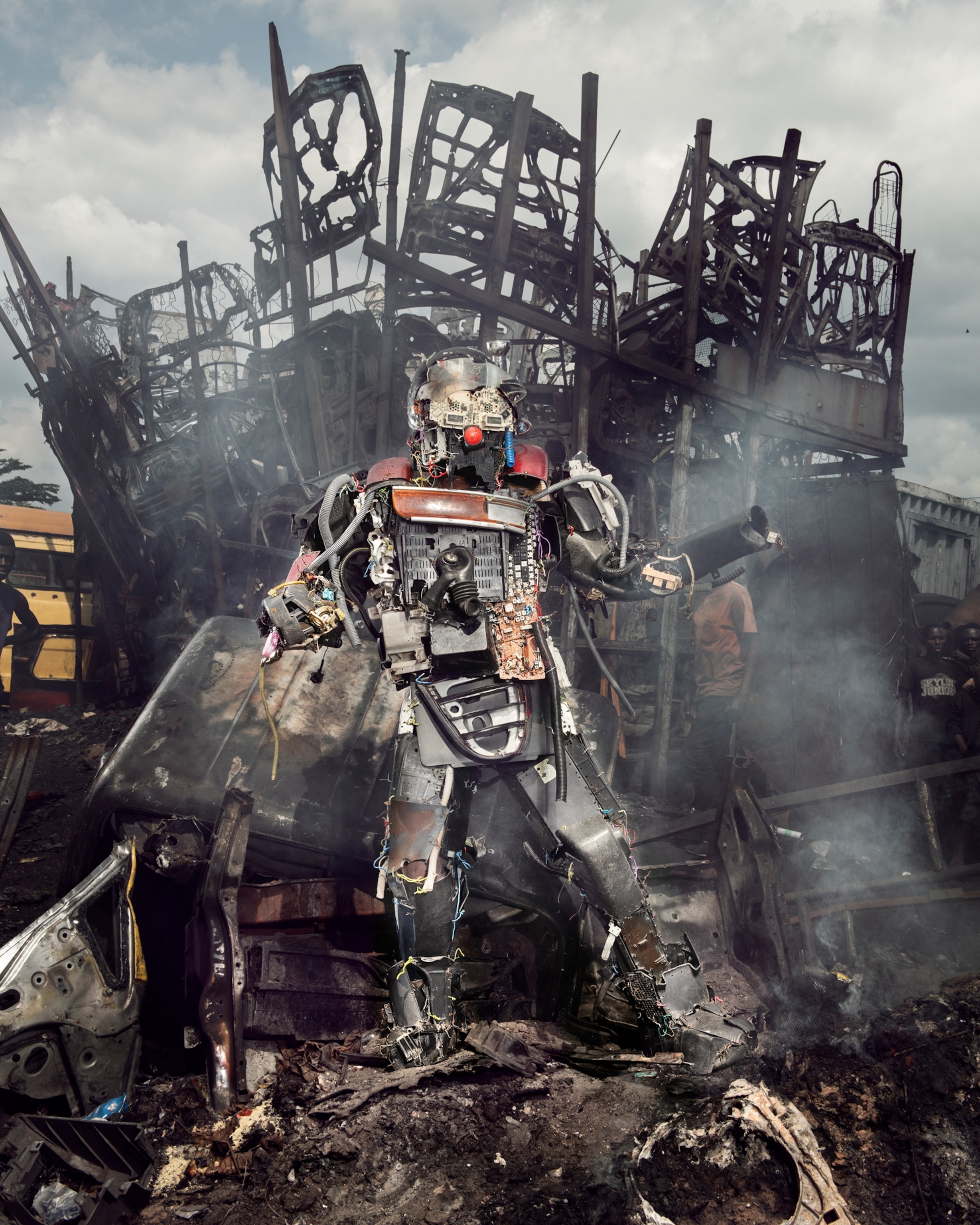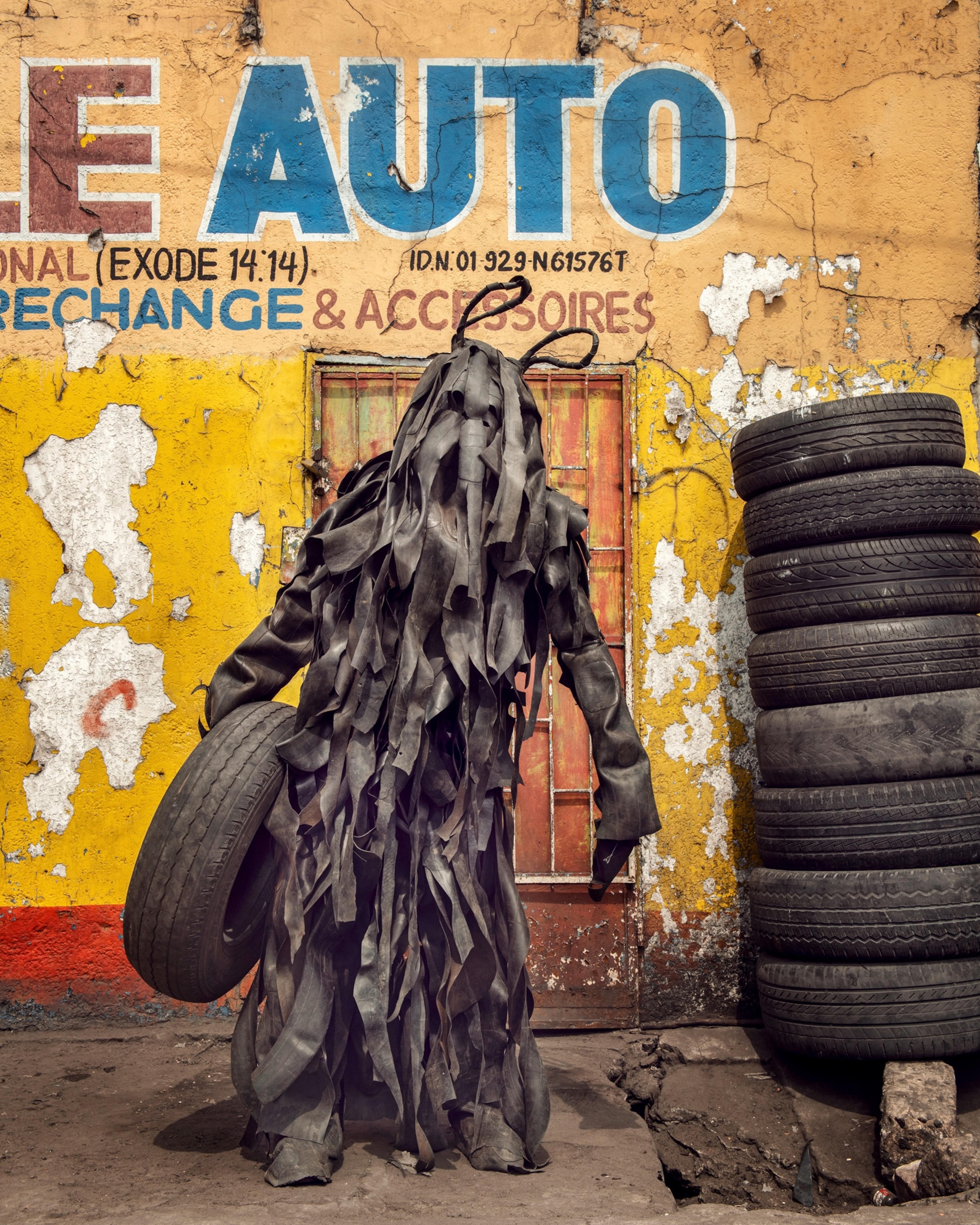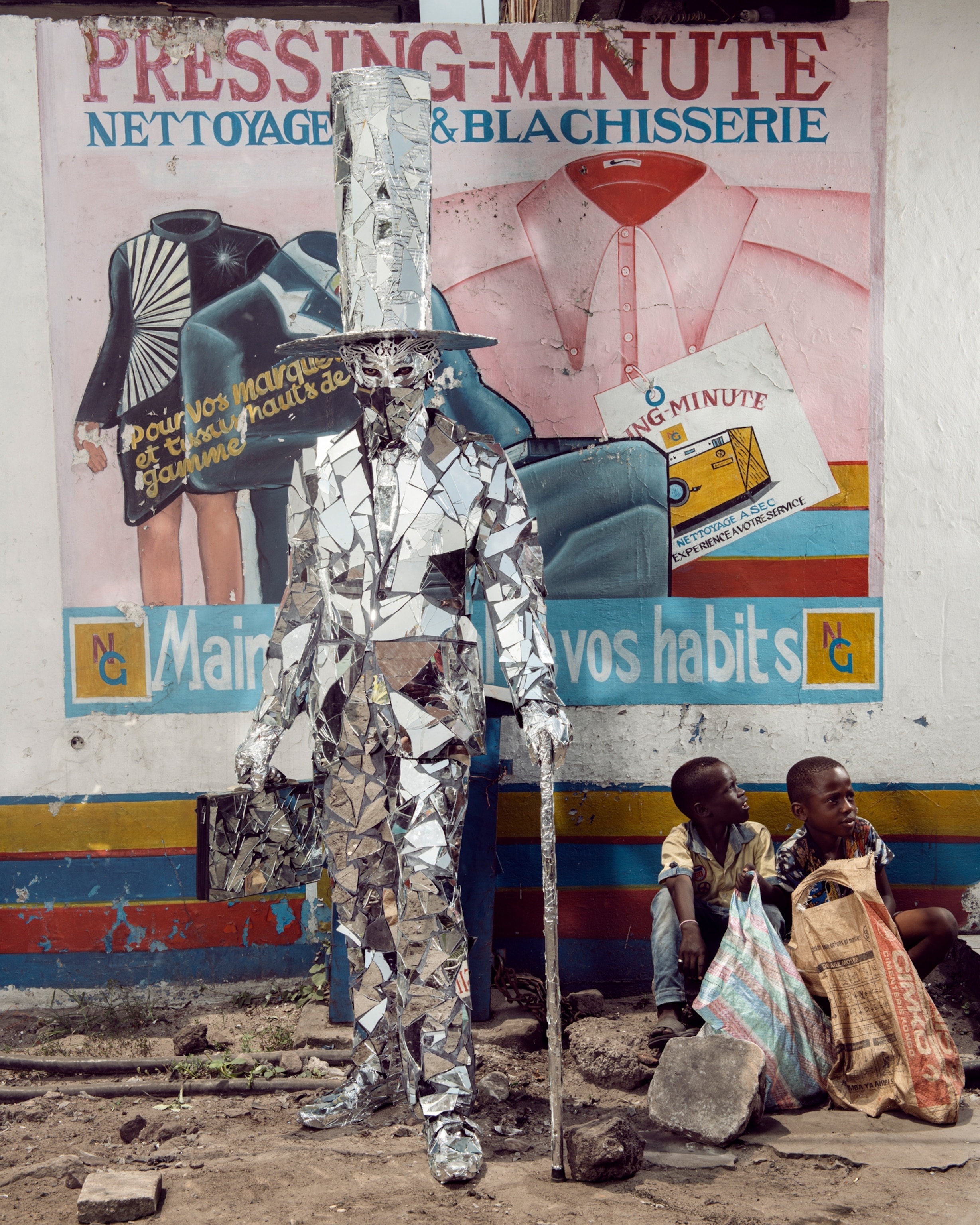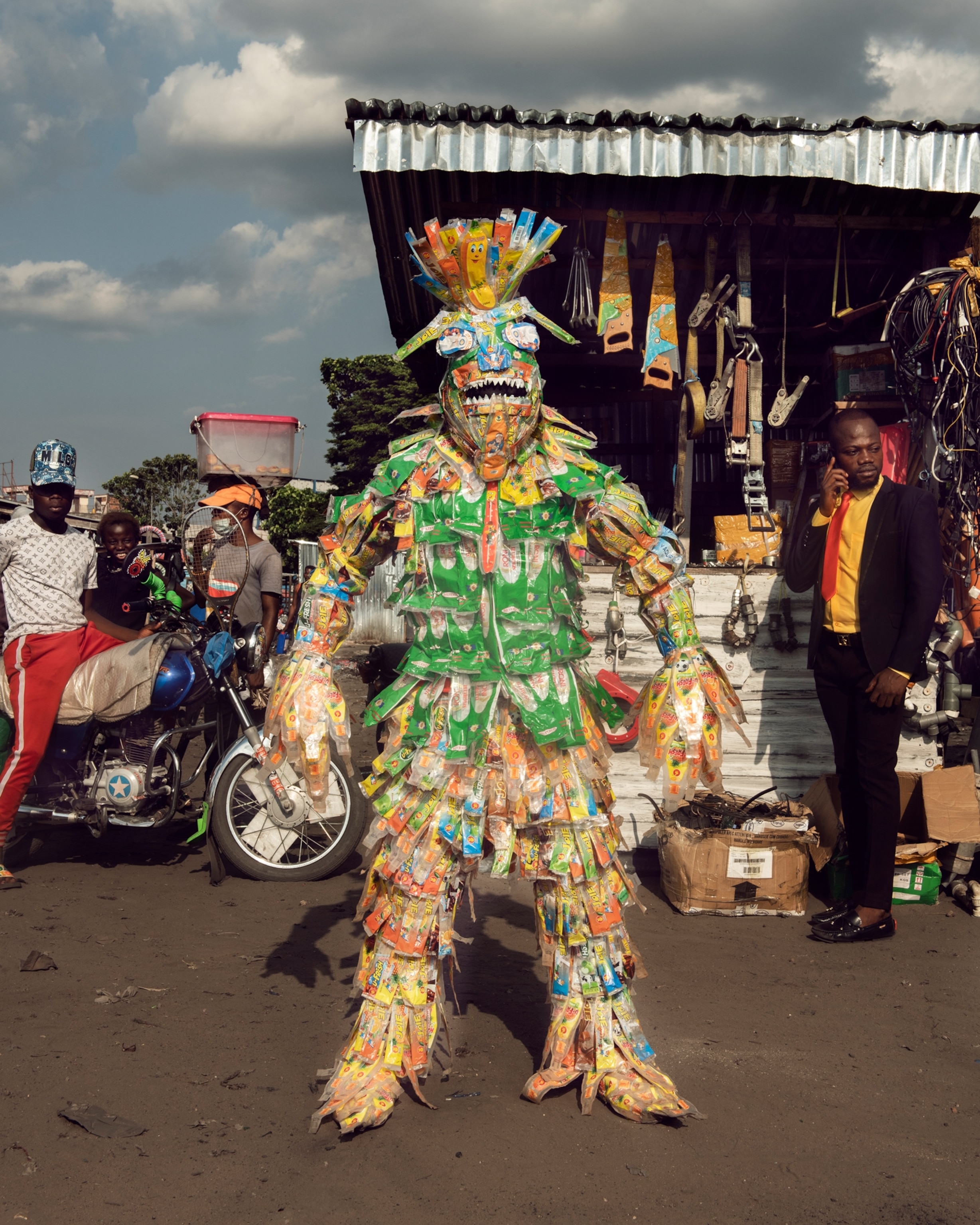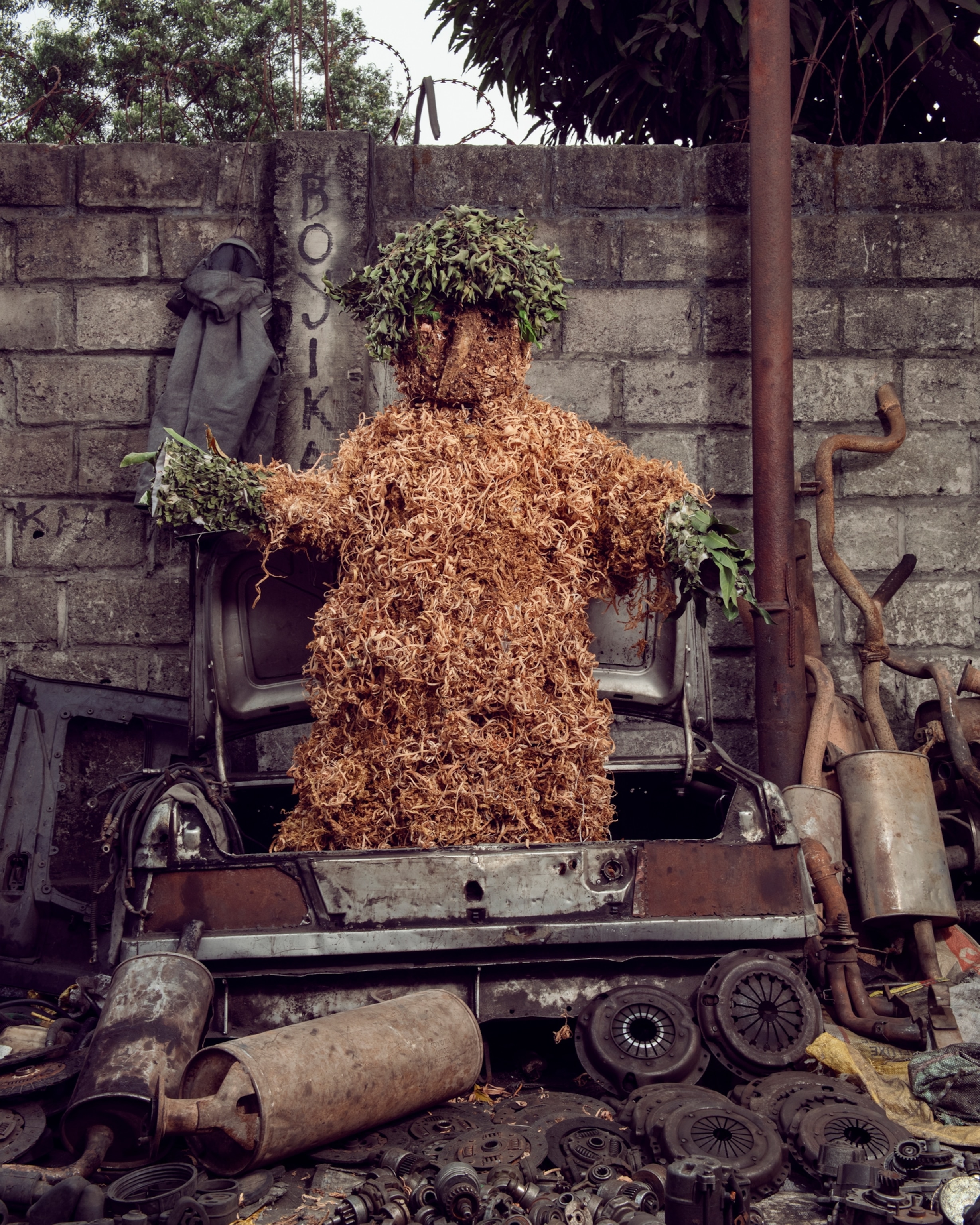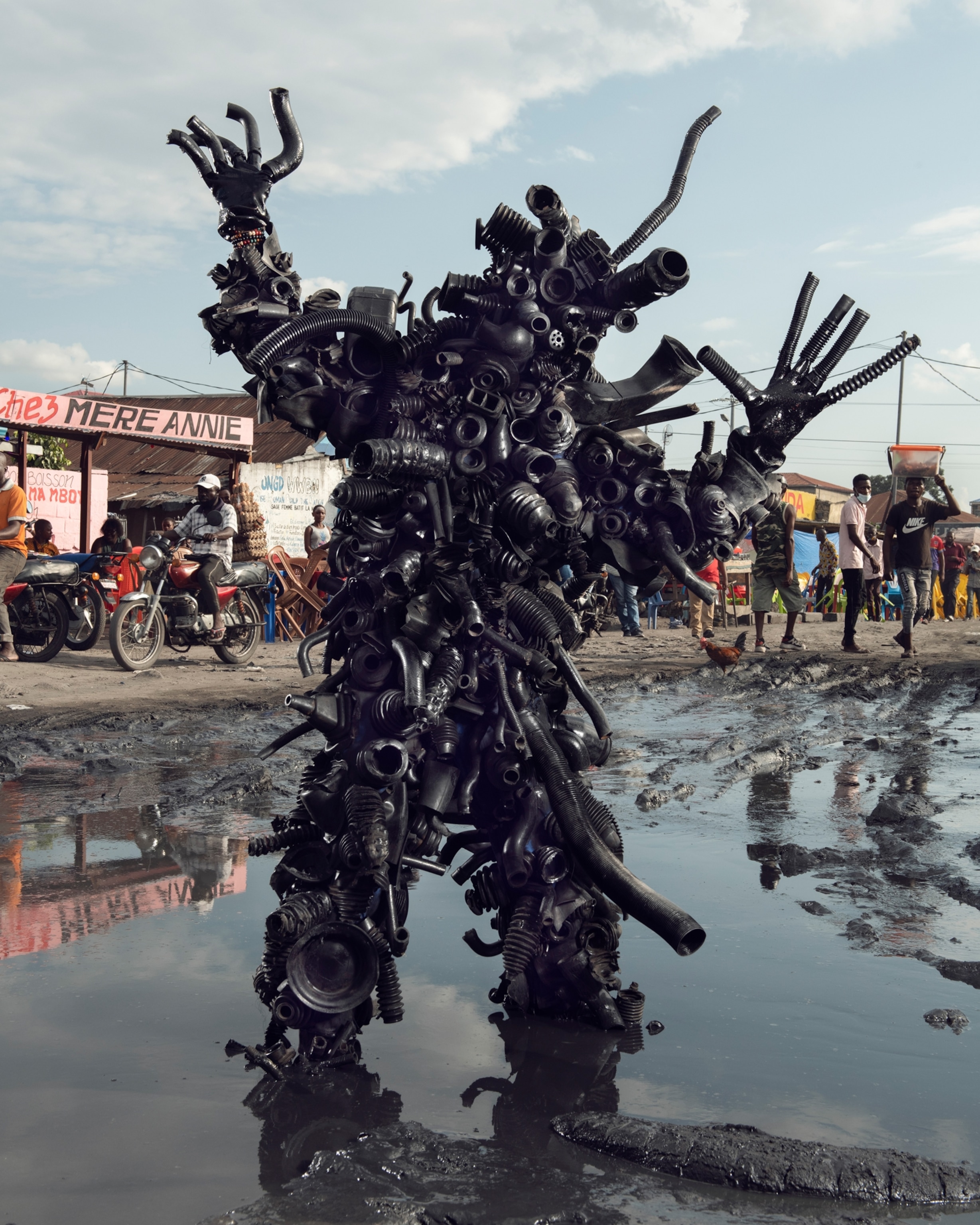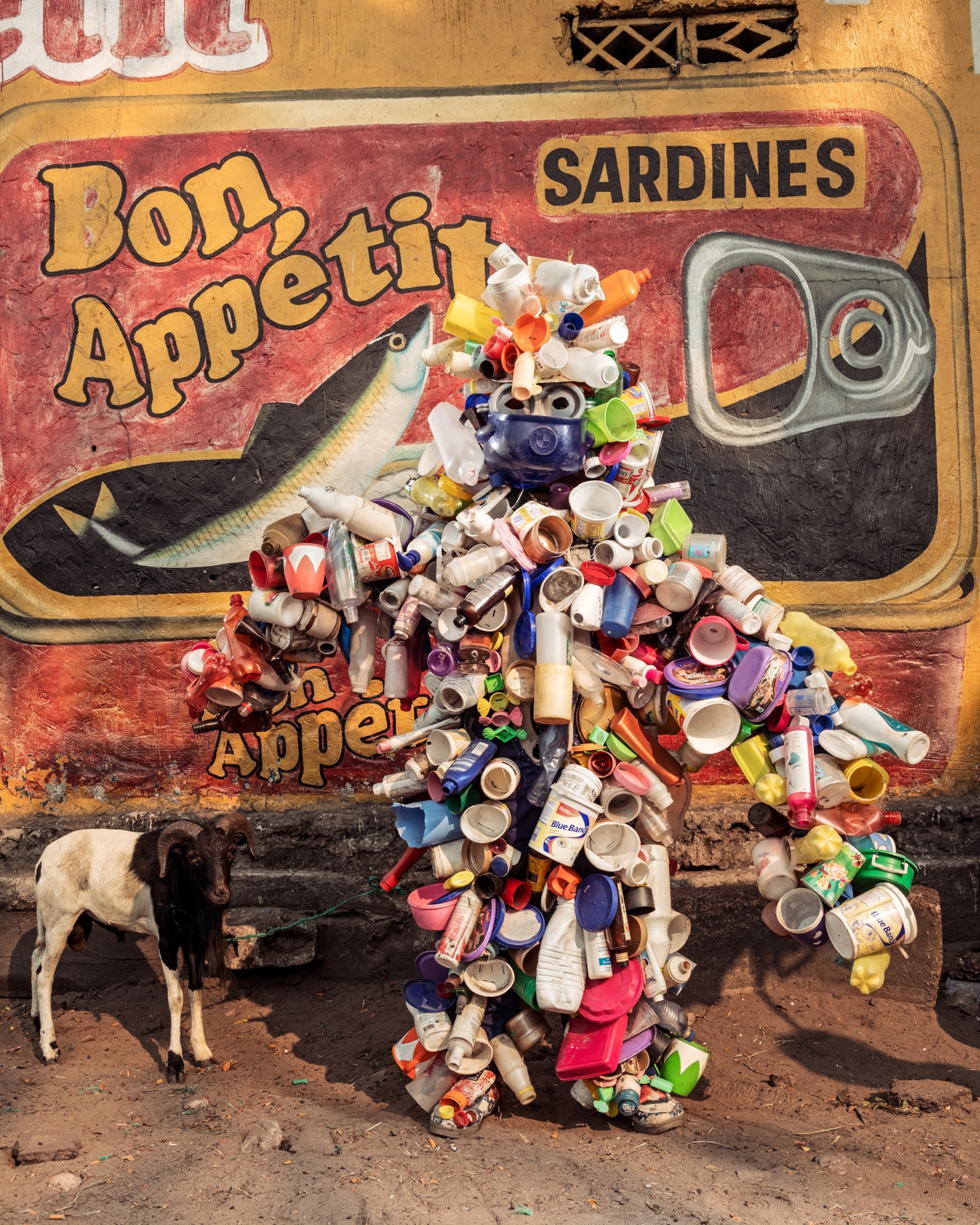It started as a countercultural art movement in 2001.
After years studying at the Academy of Fine Arts, Kinshasa—following teachers’ advice on creating work with “proper” materials, such as resin and plaster of paris—some students in the Democratic Republic of the Congo (DRC) decided to do something different. They created art with what was in their immediate environment, including tires, exhaust pipes, foam, plastic bottles, antennas, tins that had held milk or paint, feathers, CDs, rubber slippers, and other discarded items.
This work, the artists believed, felt familiar to a Congolese audience and spoke to a particularly egregious aspect of Congolese life: waste.
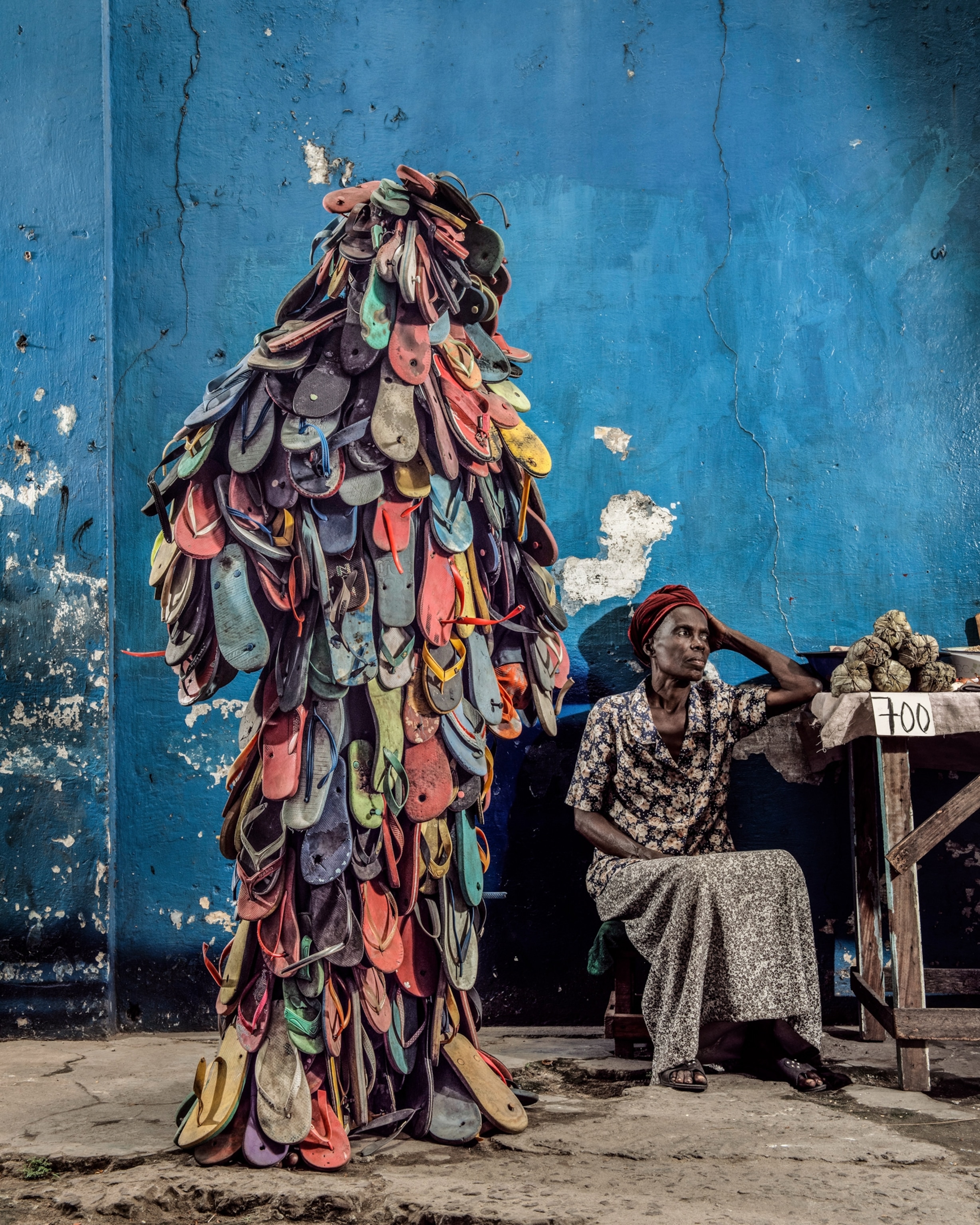
Waste generated locally by citizens. Waste foisted on the country by hyper-consumerist nations. Waste triggered by the endless extraction of resources from the DRC’s earth, or the rapacious collection of the same above land.
In Kinshasa, gutters are brimming with nonrecyclable plastic bottles. Markets are awash with second- and thirdhand goods, castoffs from high-income countries and, at a quickening pace, China. In areas where international companies mine for cobalt—a precious component of smartphone batteries—frequent discharges contaminate river systems and surrounding life.
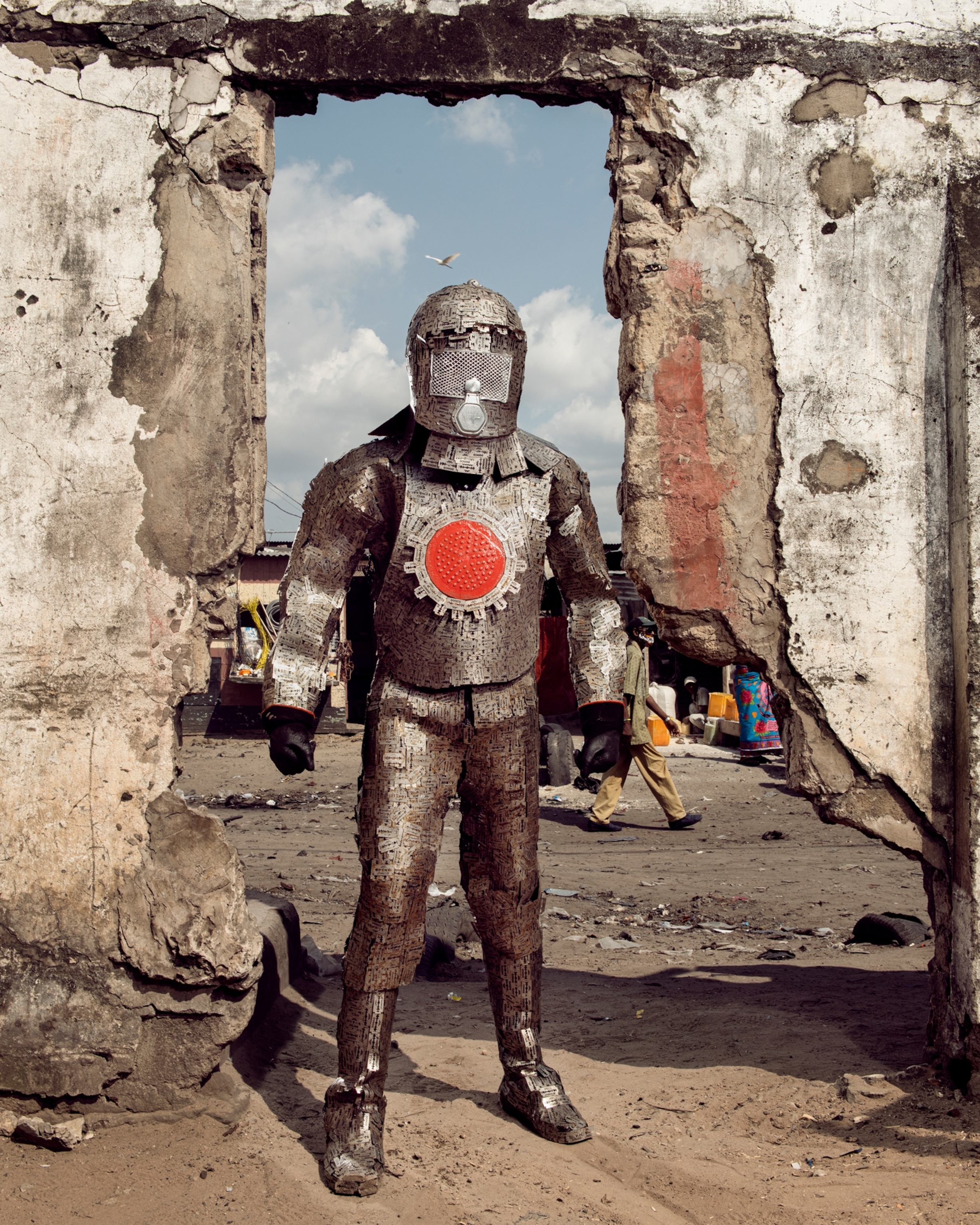
By repurposing waste to create sculpture and performance art, the artists wanted to dial up the public’s acuity toward an ongoing emergency. In 2015 they laid the groundwork for a collective to institutionalize the art: Ndaku Ya Life Is Beautiful, led by Eddy Ekete. A Kinshasa-born artist and social activist, Ekete also founded the KinAct festival, an annual showcase for the provocative creations. Increasingly, for the artists, the waste provides an opening to comment on fraught sociopolitical issues.
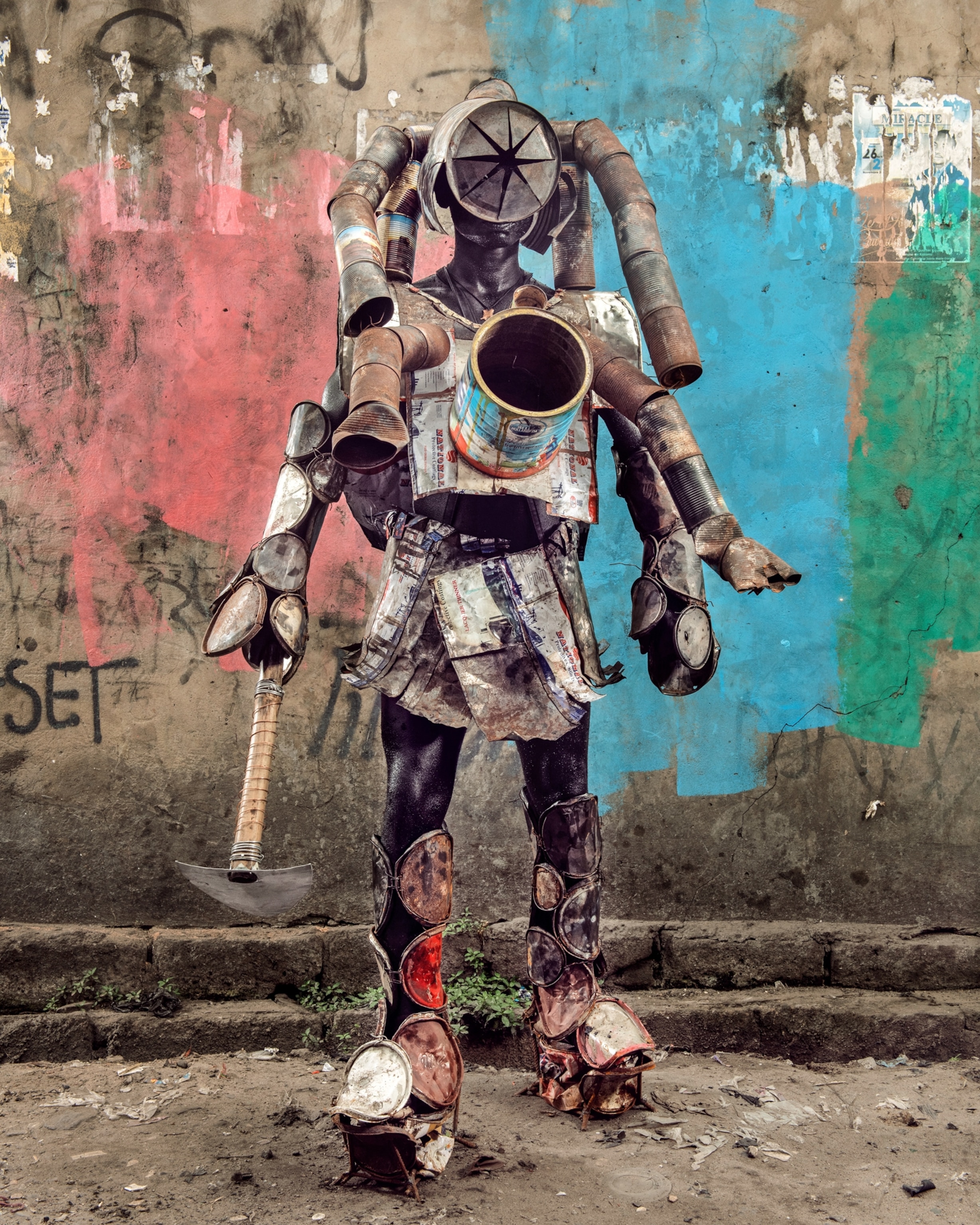
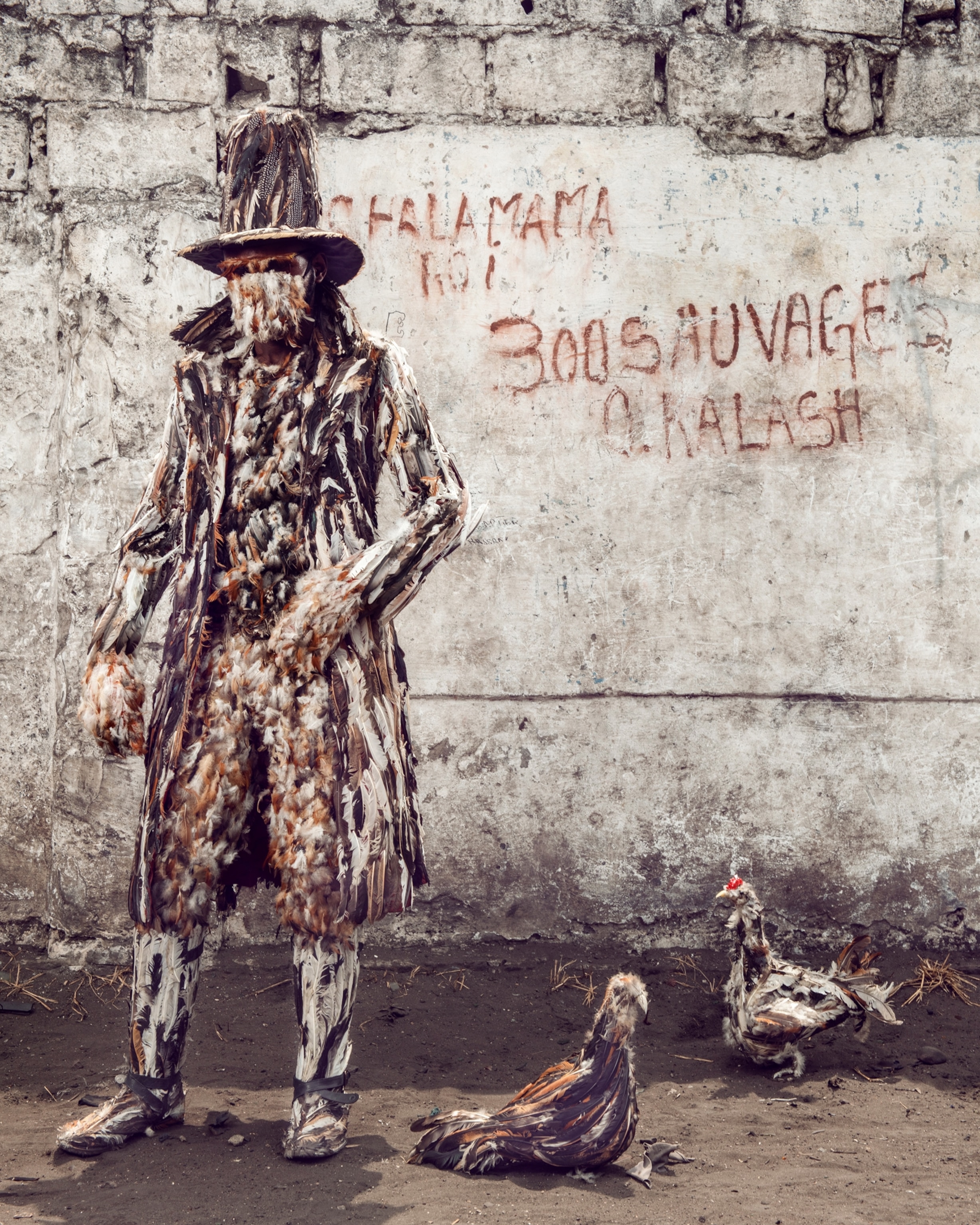
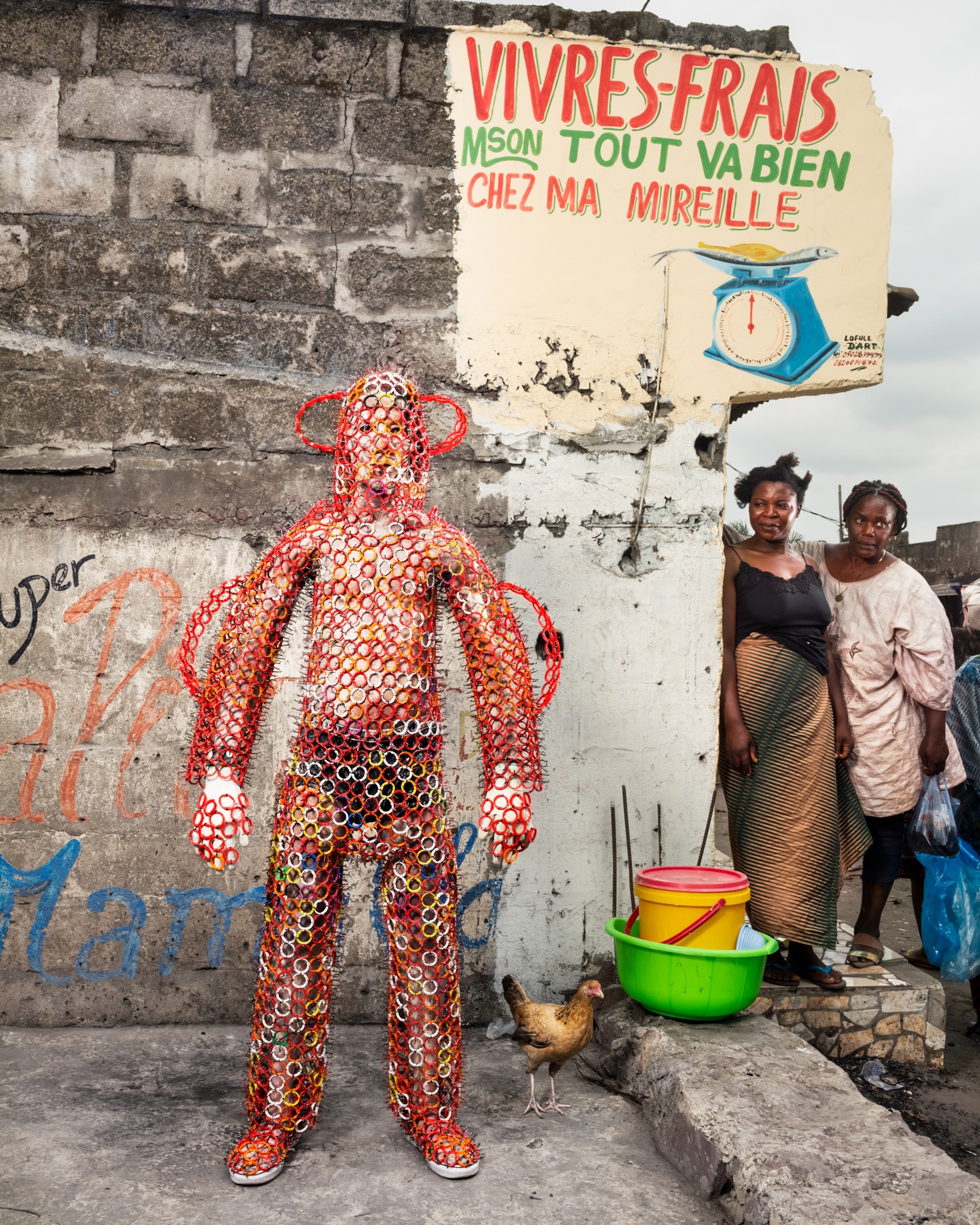
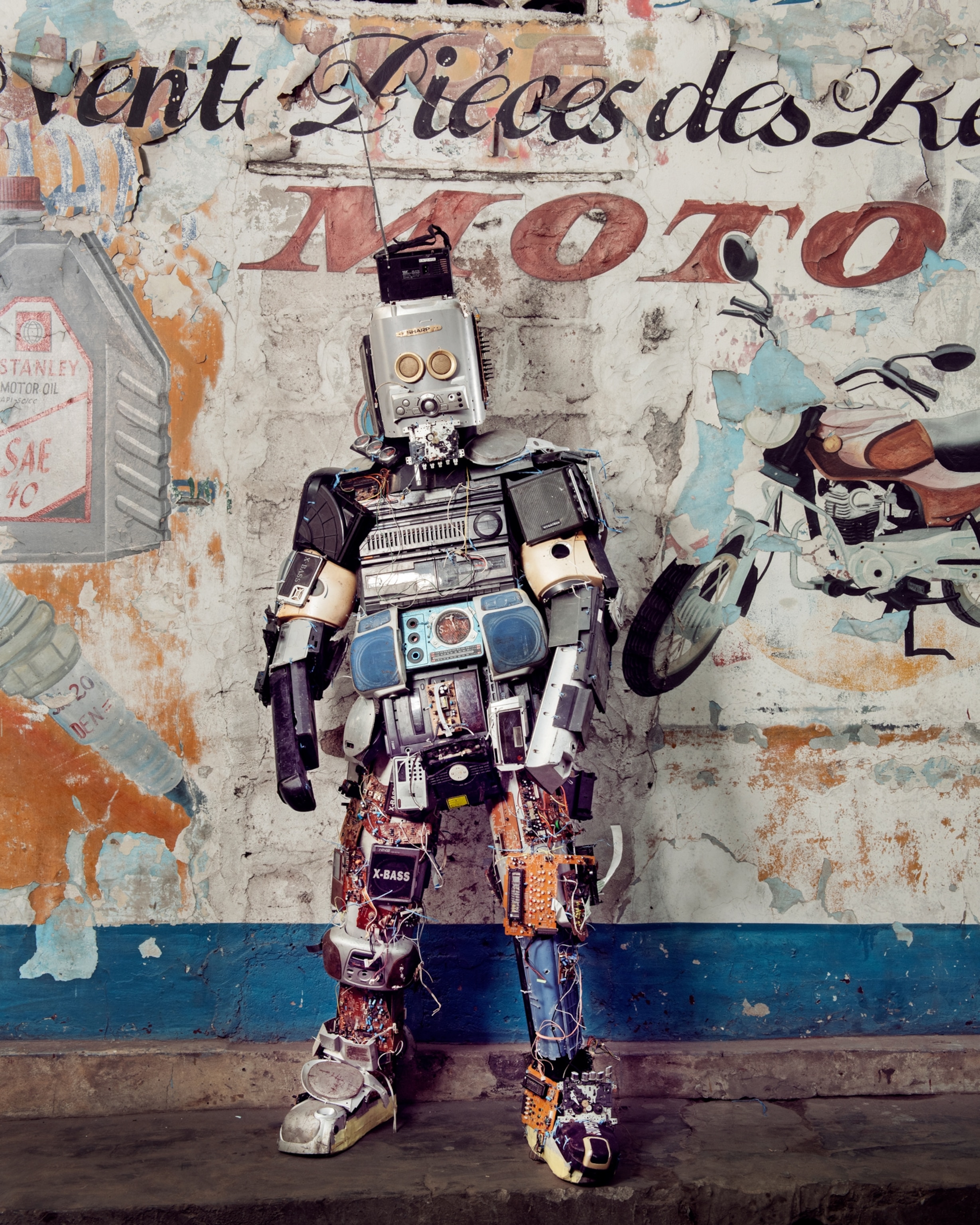
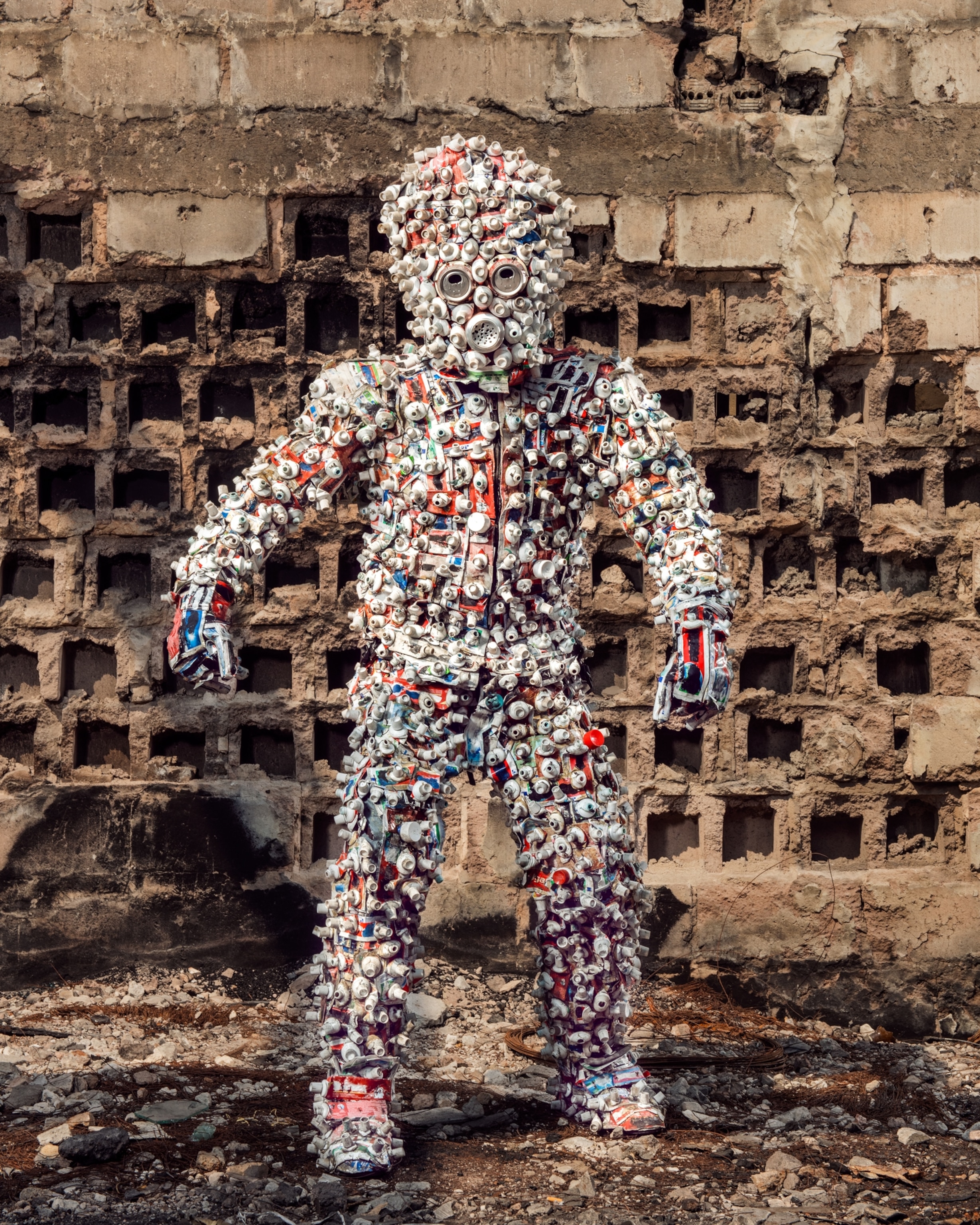
Robot Annonce, a wearable sculpture by Jared Kalenga, is made of broken radio parts. It seeks to raise awareness about the ever spreading reach of fake news.
Femme Électrique, Falonne Mambu’s creation made of electric wires, is double-edged. It speaks to the paucity of electric power service in the DRC and, simultaneously, what goes on in the dark: sexual assaults, kidnappings. Mambu’s inspiration for the work was drawn from periods in her life when she was homeless.
These socially conscious creators who turn refuse into protest art “are out here pushing limits,” says Yvon Edoumou, founder of Kinshasa’s Galerie Malabo. “We don’t see a lot of that.”
